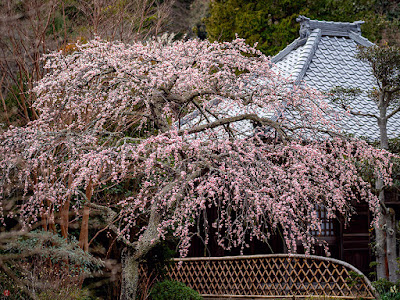In the midst of the fresh greenery that is reviving quietly from winter rest, the countless double flowers of the Shidare-ume (weeping apricot tree) are blooming to the fullest extent of their lives and are bathing in the soft sunlight as if to gently chant the praises of this season of renewal and growth.
In this height of spring, the view of the garden changes at a dizzying pace. Different kinds of colorful flowers hurriedly appear and vanish one after another.
All sorts of small living things, that have been silently holding their breath during winter, have begun to show themselves rapidly so as to compete with one another for rebirth and regrowth.














